STATISTICAL BRIEF #525:
|
||||||||||||||||||||
| September 2019 | ||||||||||||||||||||
|
Philip F. Cooper, Ph.D. and Karen E. Davis, M.A. |
||||||||||||||||||||
Highlights
|
||||||||||||||||||||
IntroductionThis Statistical Brief reports estimates of private sector employer-sponsored health insurance (ESI) premiums, and employee contributions by firm size and the percentage of the establishment’s workforce who are women. Working women ages 19 through 64 have higher medical expenditures than men of the same age (Lassman et al., 2014). This Statistical Brief investigates whether private sector ESI premiums reflect this difference. The estimates were obtained using private sector data from the 2018 Medical Expenditure Panel Survey-Insurance Component (MEPS-IC). All estimates discussed are significantly different at the 0.05 level unless otherwise noted. |
||||||||||||||||||||
FindingsFigure 1 shows ESI average total single premiums (in dollars) per enrolled employee by firm size and percentage of women in the workforce for 2018. Overall, average single premiums were higher in establishments where women made up 75 percent or more of the workforce ($7,170) compared to establishments with smaller percentages of women in the workforce ($6,723 for 50–74 percent women; $6,601 for 25–49 percent women; and $6,432 for less than 25 percent women). Additionally, these average single premiums were lower in establishments with less than 25 percent women in the workforce than average single premiums in establishments with 25–49 percent and 50–74 percent women.Sex differences in average single premiums in establishments in firms with 50 or more employees were similar to overall differences. Single average premiums were higher in establishments where women made up 75 percent or more of the workforce ($7,233) than in establishments where women made up smaller percentages ($6,723 for 50–74 percent women; $6,585 for 25–49 percent women; and $6,400 for less than 25 percent women). Additionally, for establishments with a firm size of 50 or more, average single premiums were higher in establishments with 50–74 percent women and 25–49 percent women than average single premiums in establishments with less than 25 percent women in the workforce. No statistically significant differences in average single premiums by percentage of women in the workforce were observed for establishments in firms with fewer than 50 employees. Figure 2 reports ESI average premiums for employee-plus-one health plans in 2018. As was found for average single premiums, employee-plus-one average premiums were higher in establishments with 75 percent or more women in the workforce ($13,942) than in establishments with smaller percentages of the workforce composed of women ($13,459 for 50–74 percent women; $13,375 for 25–49 percent women; and $13,050 for less than 25 percent women). Average employee-plus-one premiums in establishments with less than 25 percent women were also lower than average employee-plus-one premiums in establishments with 50–74 percent women. In establishments in a firm of 50 or more, ESI average employee-plus-one premiums were higher in establishments comprised of 75 percent or more women ($14,079) than in establishments with a smaller percentage of women in the workforce ($13,450 for 50–74 percent women; $13,370 for 25–49 percent women; and $13,115 for less than 25 percent women). As seen for average single premiums, there were no statistically significant differences observed for employee-plus-one premiums by percentage women in the workforce in establishments in firms with fewer than 50 employees. Figure 3 reports ESI average family premiums by percentage of women in the workforce in 2018. As seen for average single and employee-plus-one premiums, average employer-sponsored family premiums were higher in establishments with 75 percent or more women in the workforce ($20,593) than in establishments with smaller percentages of women ($19,529 for 50–74 percent women; $19,640 for 25–49 percent women; $18,875 for less than 25 percent women). Average ESI family premiums in establishments with 25–49 percent women and in establishments with 50–74 percent women were higher than family premiums in establishments with less than 25 percent women. In establishments with a firm size of 50 or more, ESI average family premiums were higher in establishments with a work force with 75 percent or more women ($20,908) than in establishments with smaller percentages of women in the workforce ($19,607 for 50–74 percent women; $19,677 for 25–49 percent women; $19,134 for less than 25 percent women). In establishments in a firm of fewer than 50, ESI average family premiums were lower in establishments with less than 25 percent women in the workforce ($17,882) and in establishments with 75 percent or more women ($17,659) than ESI average family premiums in establishments with 25–49 percent women ($19,235). Figure 4 shows ESI average single employee contributions. There were no statistically significant differences found in average ESI single employee contributions by percentage of women in the workforce overall, or by firm size. Figure 5 shows ESI average employee contributions to employee-plus-one health plans. Average employee contributions to employee-plus-one plans were lower in establishments with 25–49 percent women ($3,371) than average contributions to employee-plus-one plans in establishments with less than 25 percent women ($3,673), 50–74 percent women ($3,813), and more than 75 percent women ($3,722). ESI average employee contributions to employee-plus-one health plans in establishments with a firm size of 50 or more were lower in establishments with 25–49 percent women in the workforce ($3,325) than employee contributions to employee-plus-one plans in establishments with different percentages of women ($3,546 for less than 25 percent women; $3,810 for 50–74 percent women; $3,702 for 75 percent or more women). There were no statistically significant differences found in ESI average employee contributions to employee-plus-one plans by percentage of women in the workforce for firm size of fewer than 50 employees. Figure 6 shows ESI average employee contributions to family health plans in 2018. Average employee contributions to ESI family plans were higher in establishments with a workforce comprised of 75 percent or more women ($5,963) than average employee contributions to ESI family plans in establishments less than 25 percent women ($5,299) and in establishments with 25–49 percent women ($4,997). Additionally, ESI average employee contributions to family plans were also higher in establishments with 50–74 percent women ($5,681) than employee contributions to family plans in establishments with less than 25 percent women and 25–49 percent women. Among firms with 50 or more employees, ESI average employee contributions to family plans were higher in establishments with a workforce of 75 percent or more women ($5,960) than in establishments with a workforce of less than 25 percent women ($5,121) and establishments with a workforce with 25–49 percent women ($4,925). Average employee contributions to family plans were also higher in establishments with a workforce of 50–74 percent women ($5,694) than in establishments with a workforce with less than 25 percent women or 25–49 percent women. In spite of large differences in point estimates of ESI average employee contributions to family plans in firms with a workforce of fewer than 50, there are no statistically significant differences due to large standard errors. |
||||||||||||||||||||
Data SourceThis Statistical Brief summarizes data from the 2018 MEPS-IC. The data are available on the MEPS website at https://meps.ahrq.gov/mepsweb/survey_comp/Insurance.jsp or have been produced using special computation runs on the confidential MEPS-IC data available at the U.S. Census Bureau. |
||||||||||||||||||||
DefinitionsHealth insurance planAn insurance contract that provides hospital and/or physician coverage to an employee for an agreed-upon fee (premium) for a defined benefit period. Premium Agreed-upon fee paid for coverage of medical benefits for a defined benefit period, usually a calendar year. Premiums can vary based on a variety of factors, such as services covered, amounts of deductibles and co-pays, location of firm, and demographics of the workforce. Single coverage Health insurance that covers the employee only. Employee-plus-one coverage Health insurance that covers the employee plus another individual. Family coverage Health insurance that covers the employee and the employee's family. If a plan offered more than one pricing level for family coverage, information for a family of four was reported. Employee contribution The amount that the employee contributes to health plan premiums. Firm A business entity consisting of one or more establishment under common ownership or control. A firm represents the entire organization, including the company headquarters and all divisions, subsidiaries, and branches. Establishment A single physical location of a business. |
||||||||||||||||||||
About MEPS-ICMEPS-IC is a survey of private-sector business establishments and state and local governments that collects information on employer-sponsored health insurance, such as whether insurance is offered, enrollments, types of plans, and premiums. The survey is conducted annually by the U.S. Census Bureau under the sponsorship of the Agency for Healthcare Research and Quality (AHRQ). A total sample of approximately 42,000 private-sector establishments was selected for the 2018 survey, with 5.5 percent of the sample determined to be out of scope during the data collection process. The response rate for the private sector was 67.8 percent of the remaining in-scope sample units.For more information on this survey, see MEPS Methodology Reports 6, 8, 10, 14, 17, 18, 27, 28, 30, and 31 on the MEPS website at https://meps.ahrq.gov/mepsweb/data_stats/Pub_ProdLookup_Results.jsp?ProductType=Methodology%20Report&Comp=Insurance and Insurance Component Survey Basics at https://meps.ahrq.gov/mepsweb/survey_comp/Insurance.jsp. |
||||||||||||||||||||
ReferencesLassman D, Hartman M, Washington B, Andrews K, Catlin A. US Health Spending Trends By Age and Sex: Selected Years 2002-10. Health Aff (Millwood). 2014 May;33(5):815-822. |
||||||||||||||||||||
Suggested CitationCooper, P.F. and Davis, K. Premiums and Employee Contributions to Employer-Sponsored Health Insurance by Workforce Sex and Firm Size, Private Industry, 2018. Statistical Brief #525. September 2019. Agency for Healthcare Research and Quality, Rockville, MD. https://meps.ahrq.gov/mepsweb/data_files/publications/st525/stat525.shtml |
||||||||||||||||||||
|
AHRQ welcomes questions and comments from readers of this publication who are interested in obtaining more information about access, cost, use, financing, and quality of healthcare in the United States. We also invite you to tell us how you are using this Statistical Brief and other MEPS data and tools and to share suggestions on how MEPS products might be enhanced to further meet your needs. Please email us at MEPSProjectDirector@ahrq.hhs.gov or send a letter to the address below: Joel W. Cohen, PhD, Director Center for Financing, Access, and Cost Trends Agency for Healthcare Research and Quality 5600 Fishers Lane, Mailstop 07W41A Rockville, MD 20857 |
||||||||||||||||||||
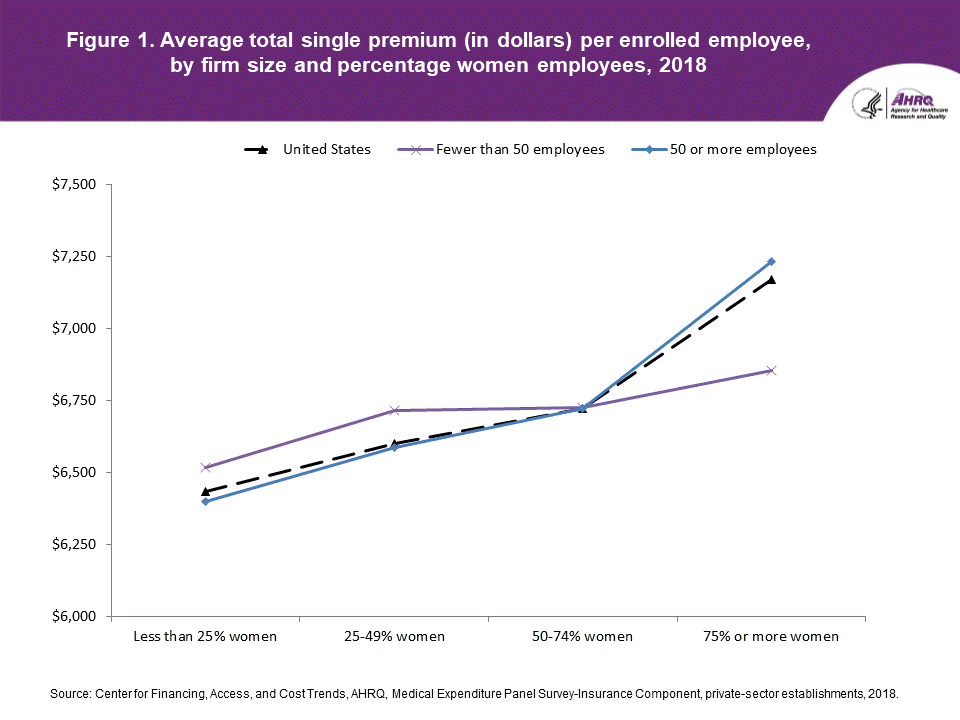 |
||||||||||||||||||||
Source: Center for Financing, Access, and Cost Trends, AHRQ, Medical Expenditure Panel Survey-Insurance Component, private-sector establishments, 2018. |
||||||||||||||||||||
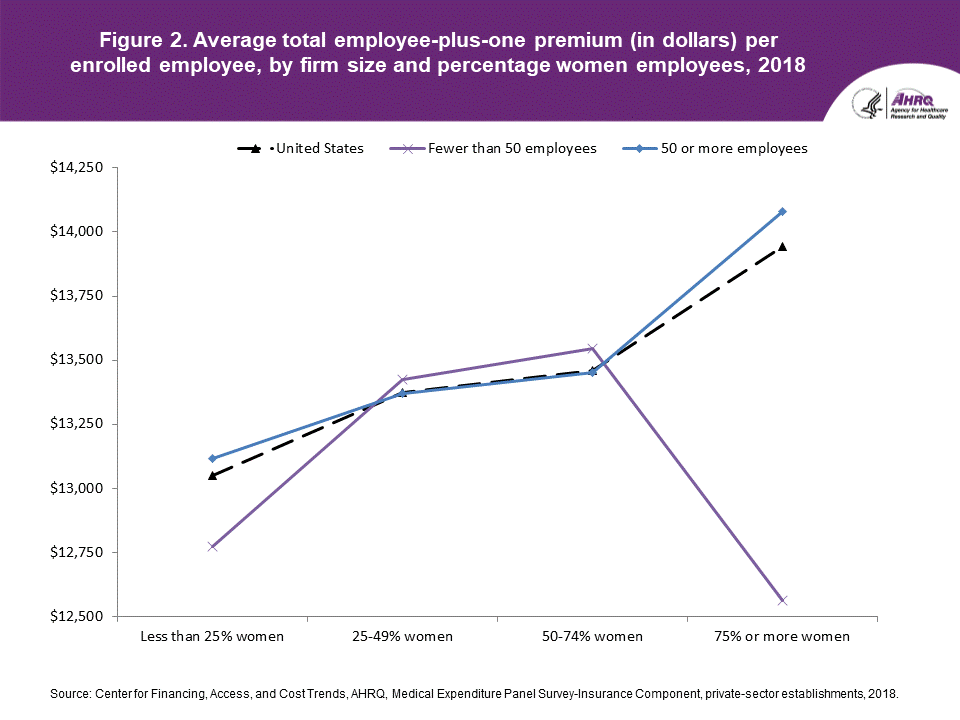 |
||||||||||||||||||||
Source: Center for Financing, Access, and Cost Trends, AHRQ, Medical Expenditure Panel Survey-Insurance Component, private-sector establishments, 2018. |
||||||||||||||||||||
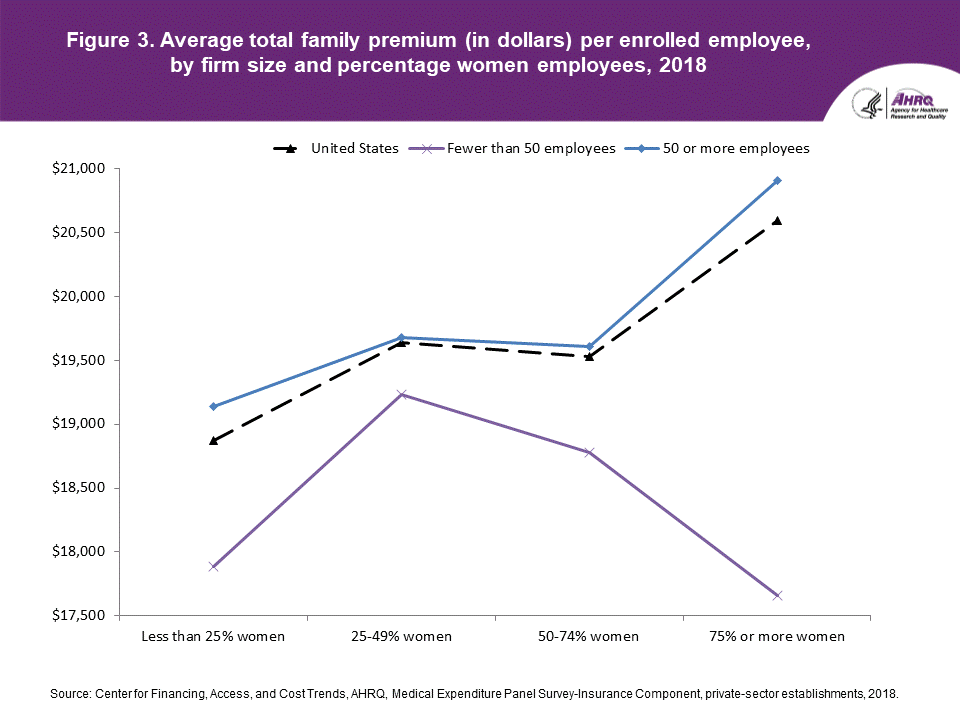 |
||||||||||||||||||||
Source: Center for Financing, Access, and Cost Trends, AHRQ, Medical Expenditure Panel Survey-Insurance Component, private-sector establishments, 2018. |
||||||||||||||||||||
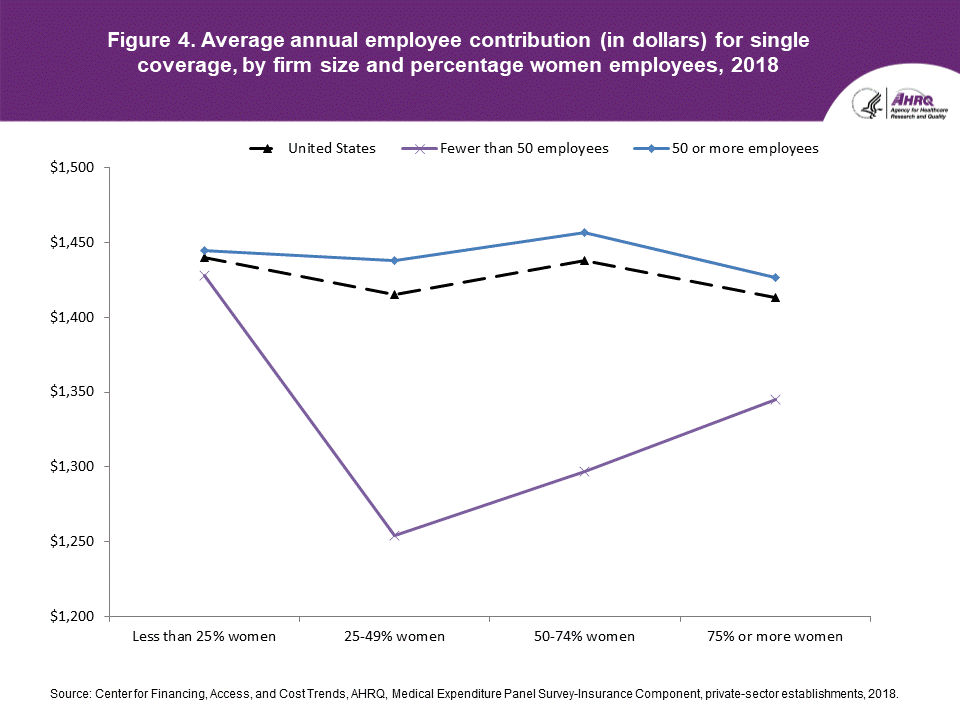 |
||||||||||||||||||||
Source: Center for Financing, Access, and Cost Trends, AHRQ, Medical Expenditure Panel Survey-Insurance Component, private-sector establishments, 2018. |
||||||||||||||||||||
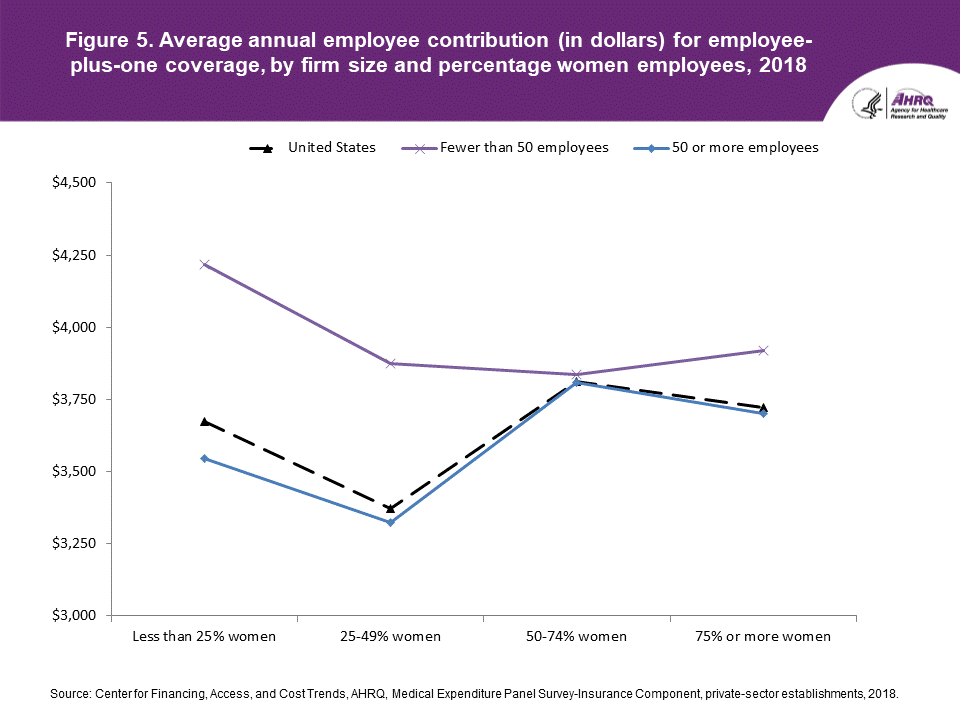 |
||||||||||||||||||||
Source: Center for Financing, Access, and Cost Trends, AHRQ, Medical Expenditure Panel Survey-Insurance Component, private-sector establishments, 2018. |
||||||||||||||||||||
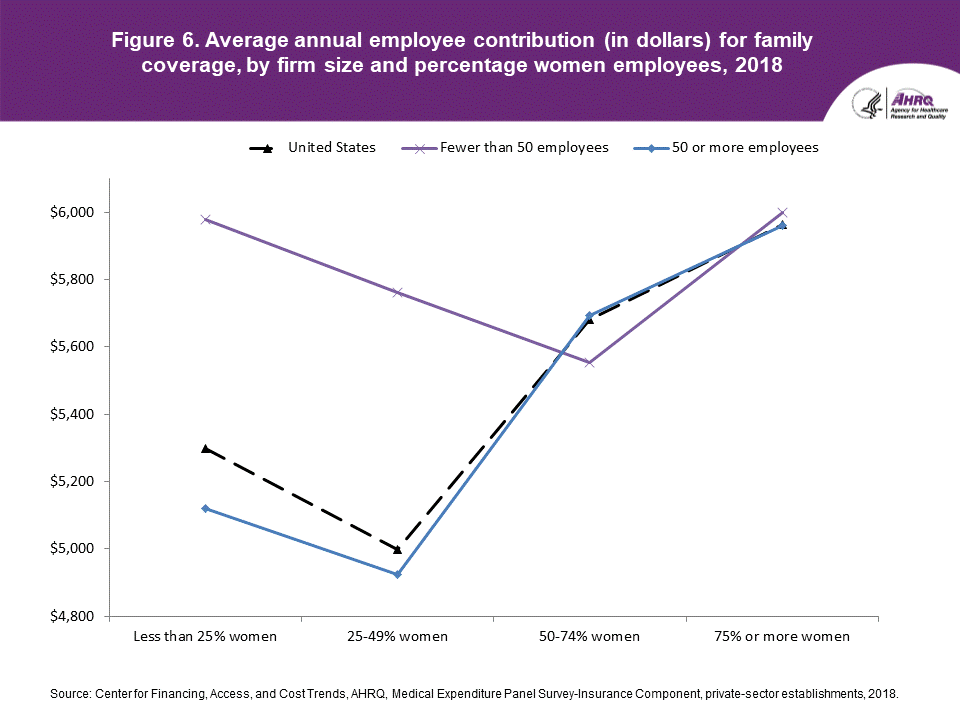 |
||||||||||||||||||||
Source: Center for Financing, Access, and Cost Trends, AHRQ, Medical Expenditure Panel Survey-Insurance Component, private-sector establishments, 2018. |

|
|
Font Size:
|
||||
|
|
|
|
||||


